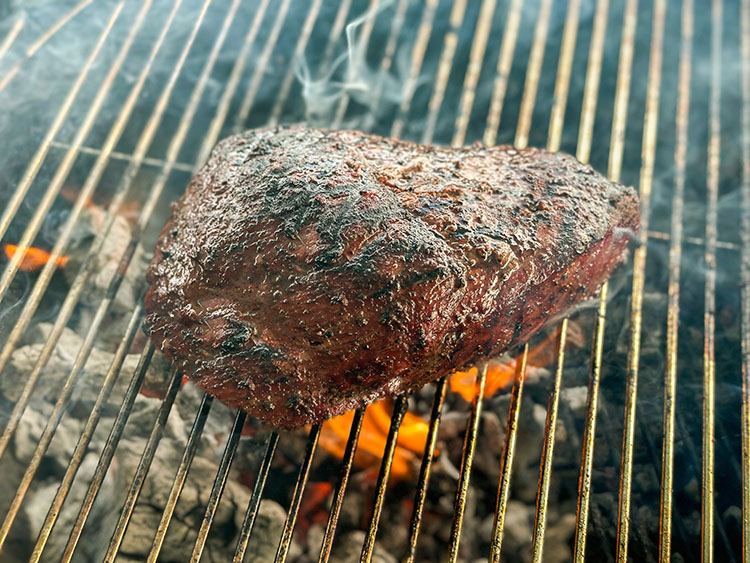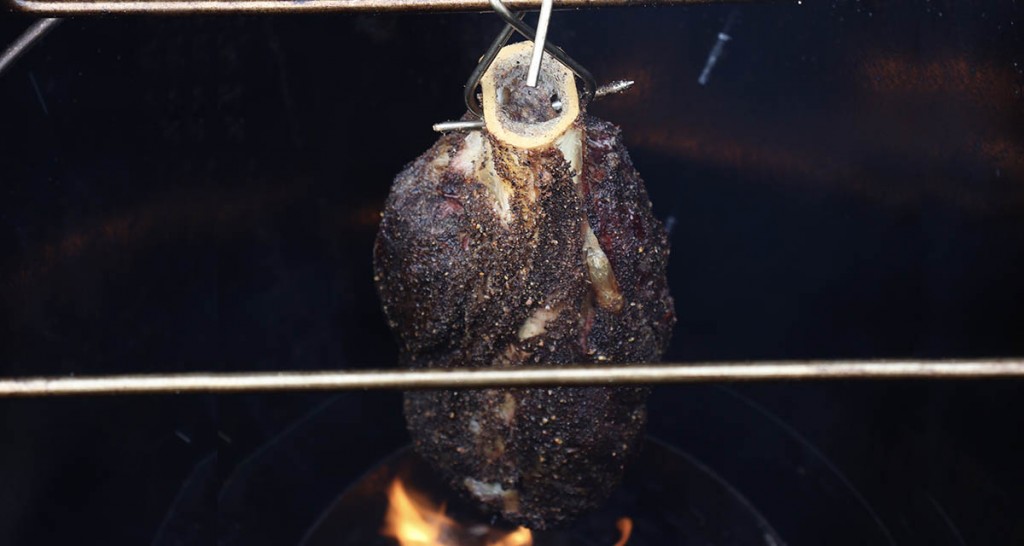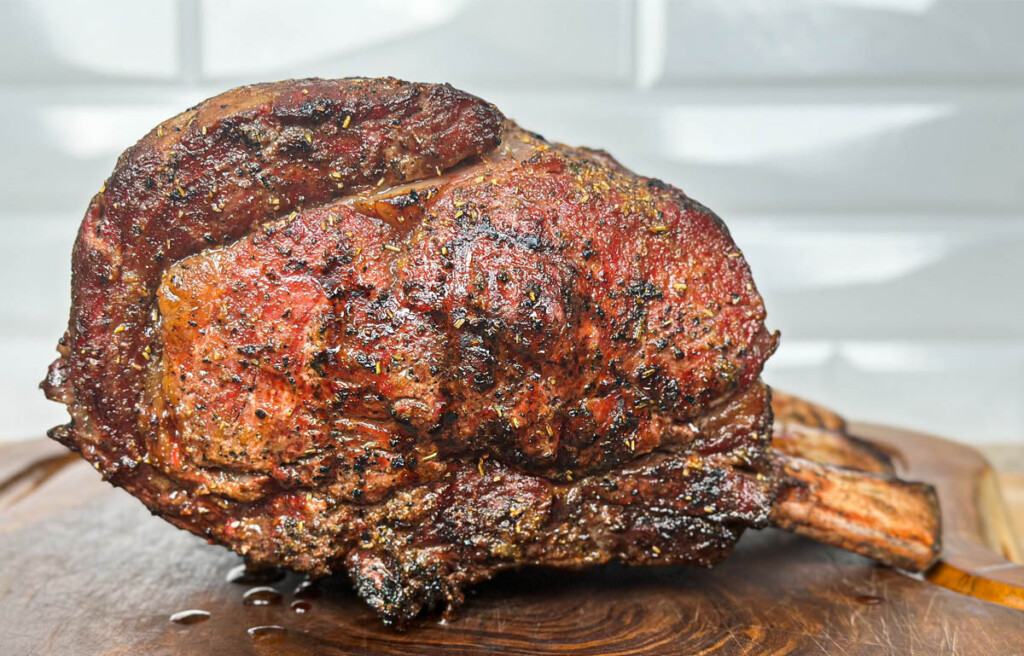When you think of beef and barbecue, you think of brisket—maybe beef ribs.
But there’s a whole world of beef cuts that are great for smoking, many of which are underrated and more affordable than buying a whole brisket. We’ve listed our favorite, plus smoking tips and links to recipes for you to try.
The best cuts of beef for smoking
1. Brisket
I know the title of this post says for when you’re sick of brisket, but any list of beef cuts has to start with this staple of Texas barbecue.
There’s nothing better than a brisket with a fantastic bark that’s moist, tender, and infused with a smoky flavor.

Brisket comes from a steer’s breast area. A full packer or whole brisket includes two overlapping and hardworking pectoral muscles, fat, and connective tissue.
There’s the lean flat cut and the fattier point cut. The flat is often used in corned beef, while the point makes the perfect burnt ends.
While it’s one of the least tender cuts, the extra intramuscular fat and connective tissues work in your favor and make it perfect for smoking low and slow.
Keep your seasoning simple with a rub of salt and pepper, and let that smoky taste shine through.
We like to get the USDA Prime and Choice and Wagyu brisket from Snake River Farms.
How to smoke
We have multiple posts detailing everything you need to know about smoking beef brisket. Start with our beginner-friendly brisket step-by-step guide before moving to the recipes below:
As for the best wood for smoking brisket, we recommend starting with popular choices like oak and hickory.
2. Short ribs
Besides brisket, one of the other most popular cuts of beef for smoking is short ribs. Also known as plate ribs, they come from the chuck primal cut found in a steer’s neck/shoulder region.
They’re usually sold in a set of three to five ribs with the short rib bones encased in a thick meat cut. They’re incredibly meaty, as one rib can weigh one pound!
Short ribs are popular in many international cuisines, from American barbecue to China and Korea. A long, slow cooking time is recommended to break down the connective tissue and make the meat tender.
How to smoke
We use a simple rub of salt, pepper, and garlic flakes for our smoked beef ribs to let that meaty flavor take center stage.
If using a pellet smoker, oak is the traditional wood pellet of choice in Texas. I stick to hickory, but any fruitwood also works.
Experiment with temperature: We stick to around 250 to 275°F, while Aaron Franklin from the infamous Franklin Barbecue in Austin pushes it to 285°F.
The time will also vary depending on the smoker and the rib thickness. But settle in because short ribs put the slow in low and slow smoking. The delicious bark and juicy meat make it worth it, though.
3. Chuck roast
When enjoying a traditional pot roast dinner, you’re likely enjoying a chuck roast. It goes by different names, such as chuck eye roast, chuck pot roast, and chuck roll roast.
But if chuck eye is called a poor man’s ribeye, a chuck roast could be nicknamed a poor man’s brisket. Because when smoked correctly, it tastes very similar to brisket. It’s also much more affordable to buy one three to six-pound chuck roast versus a whole brisket.
Cut from the shoulder; chuck roasts are versatile and flavorful cuts with a similar amount of connective tissue and intramuscular fat to briskets. They’re also best smoked low and slow, giving that beefy flavor more time to intensify.
Grab a dry-aged chuck roast from Porter Road.
How to smoke
When smoking chuck roast, we recommend using hickory or pecan wood pellets and setting your smoker to 250 degrees. Smoke the chuck roast until it reaches an internal temperature of 175°F. For this particular recipe, our smoking time was eight hours.
Chuck roasts also benefit from a spritz of water once an hour after the first three hours and wrapping like you would a brisket.
Like brisket, you can also transform chuck roast into poor man’s burnt ends. Told you it was a versatile cut!
4. Beef tenderloin
As the name suggests, beef tenderloin is the most tender beef cut. But this tenderness comes at a pretty price.
The tenderloin is a long, oblong muscle extending from a steer’s rear spine to the 13th rib. Surrounded by other cuts, this particular area doesn’t see much movement, which is why it’s so tender.
A whole beef tenderloin has three main cuts: the butt, center, and tail. You’ve probably heard of filet mignon, a steak cut from the tenderloin.
You can smoke the entire tenderloin, but I often just smoke the center cut as it’s the most tender and flavorful. Then, I turn the other cuts into roasts.
While it’s encased in a layer of fat, tenderloin is a lean cut with little marbling. So it’s important to note it can dry out if overcooked.
How to smoke
Our smoked beef tenderloin recipe uses the center cut tied with butcher’s twine. Then, we add a binder before rubbing on salt, pepper, and garlic powder.
We use a charcoal grill with pecan wood set at 250 degrees and cook it over indirect heat. Basting the tenderloin with garlic butter a few times adds flavor and moisture.
Finish by searing over direct heat for a few minutes to create a nice crust.
5. Beef cheeks
As you can imagine, a cow’s cheek is one of its most hardworking muscles. So, the best way to cook this chewy, tough, and muscled beef cut is a long, slow smoke.
Smoking and adding moisture allows beef cheeks to soften and gain juiciness. The result is a tender beef cut extremely rich in flavor.
Did we mention they’re also pretty affordable? You know you want to give them a go!
How to smoke
We love to make smoked beef cheeks into the most delicious barbacoa tacos. Start with a simple salt, pepper, and garlic rub before smoking between 250 and 300°F.
What sets this recipe apart (and makes smoked beef cheeks sing in general) is boating them. After a few hours, park them in a disposable aluminum tray filled with ginger or regular beer.
Add some brown sugar on top, cover the tray with aluminum foil for another two to three hours, and they’re done when the beef cheeks easily pull apart. The shredded smoked meat is so juicy it’ll melt in your mouth like butter. Yes, really.
6. Tri-tip
Looking for another more affordable brisket alternative? Check out a tri-tip roast (also known as a bottom sirloin or triangle roast). Made from the steer’s bottom sirloin, the tri-tip is triangular and available as roasts or sliced into steaks.
We love tri-tip because it’s a versatile cut that combines flavor with dense marbling and juicy tenderness. It’s also a heck of a lot cheaper than ribeye. Smoking the tri-tip low and slow imparts the best taste.
Get a tri-tip from Porter Road today.
How to smoke
Smoked tri-tip is one of the easiest recipes available. We season it with salt, pepper, and garlic before placing it on the indirect heat side of a smoker set to 225°F. By the way, you can’t go wrong with hickory or oak wood.
Cook your tri-tip until it reaches an internal temperature of 115°F (check from the 45-minute mark). Then, we use the reverse sear method and sear it over the direct flame until it reaches 127°F, flipping it every couple of minutes. This gives you tender, medium-rare meat on the inside and a nice crust on the outside.
Give it time to rest before slicing and serving.
7. Picanha
Picanha is among the most popular cuts at Brazilian steakhouses. It’s slowly made its way to the US, although it can be challenging to find.

Here, it might be called a rump cap, top sirloin cap, or coulotte. It’s a triangular cut found on top of a steer’s rump.
But if you get your hands on picanha, there’s much to love. It’s inexpensive and has a thick fat cap that protects it while smoking, leading to tender, juicy, and flavor-packed meat underneath.
People often say it perfectly combines a sirloin’s texture, filet mignon’s tenderness, and ribeye’s taste.
How to smoke
Our preferred way to smoke picanha is using the reverse sear method on a charcoal grill. The indirect heat gives the fat cap time to slowly baste the meat, leading to juicy, succulent picanha. The seared crust over direct heat at the end is the cherry on top.
We add a few hickory wood chunks to the charcoal and set the grill at 250 degrees. Then, we tent it with foil and take it off the grill to increase the temperature before searing it until it reaches our desired internal temperature.
8. Beef shank
You’ve heard of lamb shanks, but a beef shank can be just as delicious when smoked properly.

The steer’s lower leg portion is the shank, so it’s a lean, tough beef cut. But it has some good marbling that melts, making the meat nice and tender when smoked low and slow.
How to smoke it
We use lump charcoal, pecan, and cherry wood for our smoked beef shank. Set at 300°F, we hook the seasoned beef shank to a hanging rack and let the smoker work its magic.
When the probe slides in and out of the meat like a hot knife going through butter (between 205 and 218°F), you have yourself the perfect smoked beef shank. With meat falling off the bone, it can transform any pulled beef recipe.
9. Flank steak
Flank is a long, narrow, lean beef cut from a cow’s lower abdomen. As you can imagine, it gets a workout during the steer’s lifetime, so it’s typically a tougher cut with a robust beefy flavor.
But when smoked low and slow, you’ll forget this fact because you’ll be too busy enjoying the juicy, flavorful meat. Smoking flank steak gives its long fibers time to break down and become tender.
Flank steak is also one of the most affordable beef cuts, so we recommend trying it.
How to smoke it
Flank steak is popular for dishes like grilled carne asada, but you can also smoke it with excellent results. Its tougher texture benefits from marinade, which we use in our juicy smoked flank steak recipe.
We use a homemade marinade and let it sit for two to 24 hours. Then it’s time for the dry rub before smoking it in a pellet smoker using hickory wood pellets.
Flank steak is best smoked at 225°F for one hour until it reaches an internal temperature of 135°F. Then, let it rest before cutting against the grain for maximum tenderness.
Turn your smoked flank steak into incredible steak fajitas or sandwiches.
10. Prime Rib
A prime rib roast is a holiday classic that impresses on any dinner table. It comes from the same part of a cow as the uber-popular ribeye steak. But the prime rib is a larger cut (bone-in or boneless) spanning the spine with seven rib bones.

It might be called a boneless rib roast, beef rib roast, or standing rib roast. It’s also known as a Tomahawk Steak with the bone-in or a boneless rib-eye when sliced into individual servings.
How to smoke it
For our perfect smoked prime rib roast recipe, we use a bone-in prime rib roast from Snake River Farms. This is a personal preference when smoking, as it looks impressive, and the bones help shield and protect the meat from direct heat while smoking.
We also dry brine overnight and season it with prime rib rub and softened butter. Then, we set the pellet grill at 225 degrees using hickory wood pellets and plan for a cooking time of around 30 minutes per pound.
We recommend finishing with a sear over direct heat for best results.
Did you miss our previous article...
https://manstuffnews.com/backyard-grilling/smoked-stuffed-shrimp
 Backyard GrillingWeekend WarriorsAdvice from DadBeard GroomingTV Shows for Guys4x4 Off-Road CarsMens FashionSports NewsAncient Archeology World NewsPrivacy PolicyTerms And Conditions
Backyard GrillingWeekend WarriorsAdvice from DadBeard GroomingTV Shows for Guys4x4 Off-Road CarsMens FashionSports NewsAncient Archeology World NewsPrivacy PolicyTerms And Conditions
